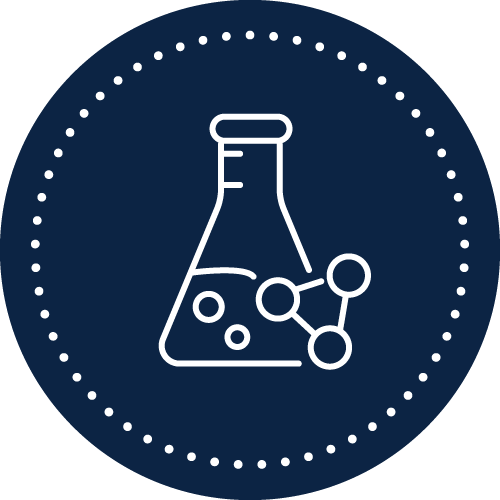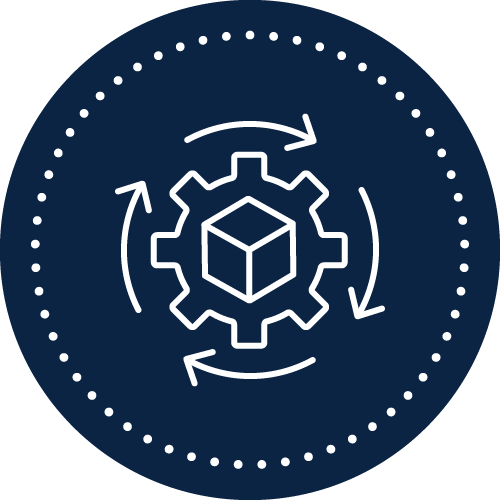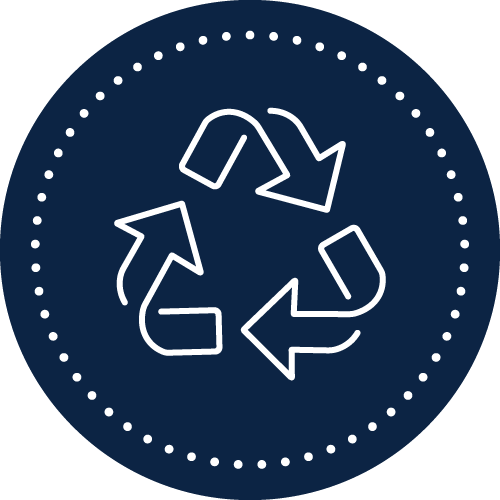The Australian Government has set an ambitious and achievable emissions reduction target for Australia 62–70% below 2005 levels in 2035. A strong foundation of Commonwealth policies and initiatives encouraging decarbonisation across the economy will underpin emissions reduction in the industry and waste sectors. These initiatives provide the direction, funding and market mechanisms that support the transition to low‑emissions technologies and practices.
Complementing this, state and territory governments play a critical role in reducing emissions through regionally‑tailored regulatory settings, planning systems and infrastructure development. Together, all governments can coordinate to support meaningful progress towards reducing industrial emissions while ensuring the continued growth and resilience of our industrial base.
The industry and waste sector can meaningfully contribute to Australia’s 2035 target and in many instances can act now. For industrial facilities that use low heat processes, immediate decarbonisation opportunities include using commercial technologies such as heat pumps and electric boilers where there is access to electricity, as well as improving energy performance. Others will need to use new technologies or alternative feedstocks and supply chains.
The Safeguard Mechanism is driving momentum
The Safeguard Mechanism gives industry the clearest and most direct signal to reduce emissions in line with Australia's climate targets. It applies a declining emissions baseline to facilities emitting more than 100,000 tonnes of CO2‑e a year and covers approximately 56% of industrial sector scope 1 emissions. The Safeguard Mechanism supports long‑term investment certainty and operational planning as well as encourages investment in commercially viable abatement technologies and alternative inputs. See the Net Zero Plan for more information on the Safeguard Mechanism.
The Safeguard Mechanism will continue to be the main framework for industry facilities to adopt decarbonisation technologies, particularly for heavy industrial facilities. The 2023–24 Safeguard Data Insights from the Clean Energy Regulator shows that Safeguard facilities are already reducing their emissions, abating 2.7 Mt CO2‑e in the first year of operations of the reformed scheme (CER, 2025a). The Safeguard Mechanism can incentivise the uptake of technologies in the near to medium term. These include electric boilers for alumina refining, alternative fuels for cement production, tertiary abatement catalysts for chemicals and improvements to blast furnaces for ironmaking.
Capitalising on Australia’s opportunities
The Australian Government is creating a positive investment environment through A Future Made in Australia. This environment lets industry, government and investors share the risks and rewards of investing in clean, low‑emissions industries such as green metals production and battery manufacturing. To support the net zero transformation of existing industries and the growth of new industries, the Australian Government has announced over $22.7 billion to promote industrial development where Australia has comparative advantages. This positions Australian industry to compete in a global net zero economy.
A Future Made in Australia is underpinned by a robust National Interest Framework which will ensure significant public investments incentivise private investment at scale. Government support is in 2 streams:
- The Net Zero Transformation Stream for industries that will make a significant contribution to the net zero transition and are expected to have an enduring comparative advantage.
- The Economic Resilience and Security Stream for industries that are necessary for domestic economic resilience and require the encouragement of public funding.
To unlock this opportunity, the Australian Government has introduced several funding initiatives:
- Green Iron Investment Fund: A $1 billion fund to support early movers in establishing commercial‑scale green iron facilities that use lower emissions technologies such as direct reduction using gas or hydrogen. Up to $500 million of this fund will be used the help support the Whyalla transformation.
- Green Aluminium Production Credit: A $2 billion initiative to support aluminium smelters to transition further to renewable electricity, helping position Australian aluminium as some of the greenest in the world.
- Future Made in Australia Innovation Fund: A $1.5 billion fund that includes $750 million to support the new technologies needed for green metals through pilot and demonstration projects, and early‑stage development.
- Battery Breakthrough Initiative: A $500 million fund to strengthen economic resilience and critical battery manufacturing capabilities, particularly those for high‑value battery products in Australia’s areas of competitive advantage.
- Green Metals Innovation Network: A $10 million network run by the CSIRO in collaboration with the Heavy Industry Low‑carbon Transition Cooperative Research Centre, which brings together research, government and industry to address key technical and economic challenges for green metals.
The Australian Government is also funding co‑contributions to capital investment and providing attractive financing options through initiatives to support decarbonisation and low‑emissions technologies. The $15 billion National Reconstruction Fund (NRF) finances investments in priority areas like renewables and low emissions technologies to support early‑stage startups, growth‑stage companies and mature businesses. The Net Zero Fund will be a new $5 billion sub-fund of the NRF to support major investments by large industrial facilities in decarbonisation and energy efficiency, and scale up manufacturing low emissions technologies. The Net Zero Fund will buttress and modernise domestic industrial capability. The funds will be drawn from existing NRF capital and will be a refocusing of the NRF’s priorities. The Powering the Regions Fund will continue to support a range of decarbonisation investments in Australian industry through:
- the $600 million Safeguard Transformation Stream (STS)
- the $400 million Industrial Transformation Stream (ITS)
- the $400 million Critical Inputs to Clean Energy Industries (CICEI) programs.
The STS and ITS will open new rounds soon. The Australian Government will continue to consider the needs, resourcing and priorities of the fund over time in light of program priorities, the Net Zero Plan and this sector plan.
The Clean Energy Finance Corporation’s Rewiring the Nation program further supports industrial decarbonisation through electrification and renewables. Rewiring the Nation provides low‑cost finance to expand, modernise and connect renewables to Australia’s electricity grid – particularly transmission lines and renewable energy zones. This enhanced grid infrastructure allows large‑scale renewable energy generation to reach industrial centres, supporting the shift towards renewable electricity. The Capacity Investment Scheme provides a long‑term revenue‑underwriting framework that lowers investor risk for new renewable generation and firming resources (like battery storage). The National Electricity Market wholesale market settings review will further help to deliver reliable, competitively priced and secure electricity services. Together, these initiatives allow industries to electrify processes, reduce exposure to volatile fuel markets and adopt renewables at scale – making meaningful, practical industrial decarbonisation achievable. Some important technologies that these measures can enable include deployment of heat pumps and electric boilers.
The Future Gas Strategy and National Hydrogen Strategy are vital pillars to Australia’s industrial decarbonisation by supporting the scale up and adoption of alternative fuels and inputs. The Future Gas Strategy outlines how gas can support the transition towards renewable energy, especially where electrification is not yet viable. Consistent with Future Gas Strategy, the Gas Market Review will examine existing government policies and ensure sufficient gas supply in the longer term. Switching from coal to gas is also an important transition step for industries to reduce their emissions before alternative lower emission inputs and technologies become available.
Renewable hydrogen is critical to industrial decarbonisation for key subsectors. The National Hydrogen Strategy will guide Australia’s production, use and export of hydrogen. The Australian Government’s Hydrogen Headstart program and Hydrogen Production Tax Incentive helps catalyse renewable hydrogen and clean energy industries. These strategies and supporting measures are particularly important for industries that require renewable hydrogen such as green iron and green ammonia production.
Green industries that are supported by the Future Made in Australia investments help deliver a stronger Australian economy. As the global economy decarbonises, existing Australian fossil fuel exports will decline. Clean industries could offset the loss of fossil fuel export revenue. In Treasury’s Renewable Exports Upside Scenario, export revenue from green commodity sectors is projected to reach $178 billion in 2050, provided there is effective coordination, strong ambition and steady technological progress.
States and territories
Australian governments are increasingly aligning their efforts to coordinate industrial decarbonisation, recognising the need to reduce emissions from hard to abate sectors while maintaining economic competitiveness. All governments are working together to develop and deploy low‑emissions technologies, including renewable hydrogen, carbon capture and storage, and electrification of industrial processes. This coordination is critical to ensuring regulatory consistency, supporting shared infrastructure investments and planning the industry transition across jurisdictions.
Australian states and territories are actively developing and implementing strategies, legislation and roadmaps to reduce emissions and support the industrial transition. The state and territory governments are working in close alignment with Australia’s ambitious and achievable target of net zero by 2050. All governments are collaboratively advancing Australia’s industrial decarbonisation through the National Transformation Principles. These underscore a shared commitment to a fair and inclusive transition, emphasising place‑based approaches, First Nations partnerships and regional economic diversification. This collaboration is exemplified through the National Energy Transformation Partnership, the Capacity Investment Scheme and Renewable Energy Transformation Agreements.
Pathways to decarbonisation
Immediate decarbonisation opportunities are available for industrial facilities that use low heat processes. These facilities can use commercially available technologies such as heat pumps and electric boilers and optimise their energy efficiency. Industrial sub‑sectors that use high heat will be on a slower decarbonisation trajectory. They will need new technologies or alternative feedstocks and supply chains to support their transition (Climate Change Authority, 2024). The 4 key areas of decarbonisation focus are:
1. Optimise energy use now to reduce costs
Energy performance upgrades to optimise energy use across the economy could achieve more than 13% of the emissions reductions needed to achieve net zero by 2050 (ANZ; EEC, 2024). It is particularly important for the industrial sectors (DCCEEW, 2024a) and is the first logical step in the decarbonisation pathway for all business in the 9 sub‑sectors. Energy performance upgrades will deliver immediate benefits, are deployable now, and will help reduce the cost of future upgrades (IEA, 2025a).
Energy performance is also a pathway to modernise Australian businesses, improving competitiveness and productivity while reducing emissions (even in hard‑to‑abate sectors). Energy efficiency upgrades that use less energy to do the same job, is an ideal first step in the decarbonisation of industrial processes and can achieve immediate reductions in emissions and energy costs. For example:
- The use of heat recovery or thermal energy storage to reduce the amount of gas needed for process heat and to reduce emissions. Thermal energy storage systems can also help businesses better harness renewables and solar to further reduce operational costs (CSIRO, 2023).
- Upgrading old equipment such as pumps, refrigeration and hot water systems to improve efficiency. In addition to being more efficient, upgraded equipment typically operates more quickly, with more capacity for optimisation through the incorporation of digitisation and AI technologies. For example, a new air compressor helped a paint maker reduce electricity use by 23% (ANZ; EEC, 2024).
- Deploying smart technologies to help monitor and optimise manufacturing processes and energy use.
Many of these energy efficiency measures can be deployed now using commercial technologies that do not require costly whole of plant upgrades. Studies have shown that energy efficiency can deliver an average 11% per annum in energy savings, with some having a payback period of under one year (IEA, 2025b). The $56.7 million Energy Efficiency Grants for Small and Medium Sized Enterprises program supports businesses to upgrade or replace inefficient equipment and implement other energy efficiency activities. The program assists businesses lower their energy use and improve their energy efficiency.
Industries can also optimise energy through demand flexibility to better harness times of peak renewable generation where cost of electricity is low. Demand flexibility is discussed in further detail in the ‘Enabling the Transition’ section below as well as in the Electricity and Energy Sector Plan, but in summary, demand flexibility for industry includes:
- Adjusting processes to take advantage of time of use tariffs e.g. minimise production when renewable generation is low and maximise production when renewable generation is high.
- Use of energy storage such as batteries or electric thermal energy storage to load shift and reduce industrial demand on the grid in times of low renewable generation.










